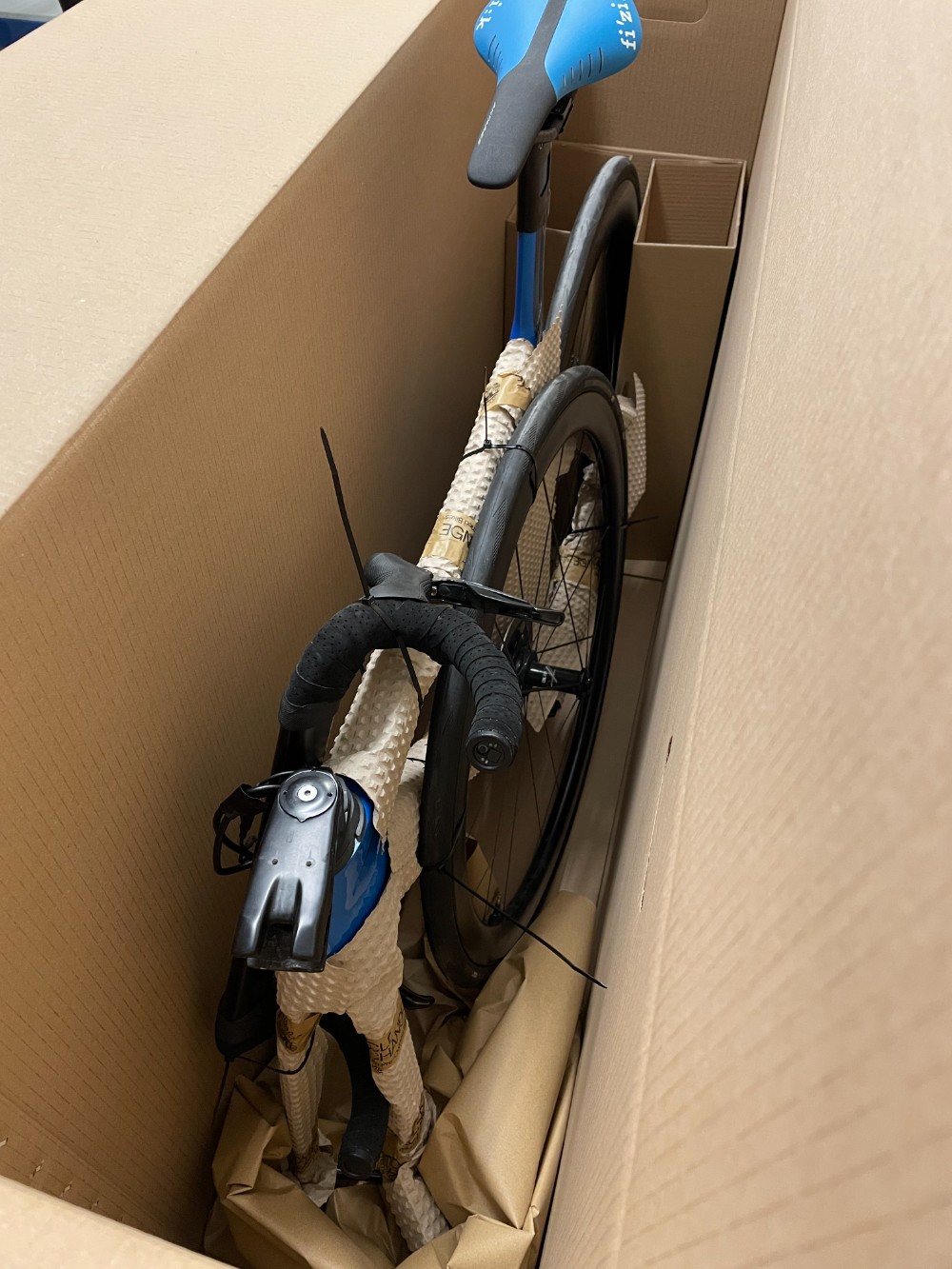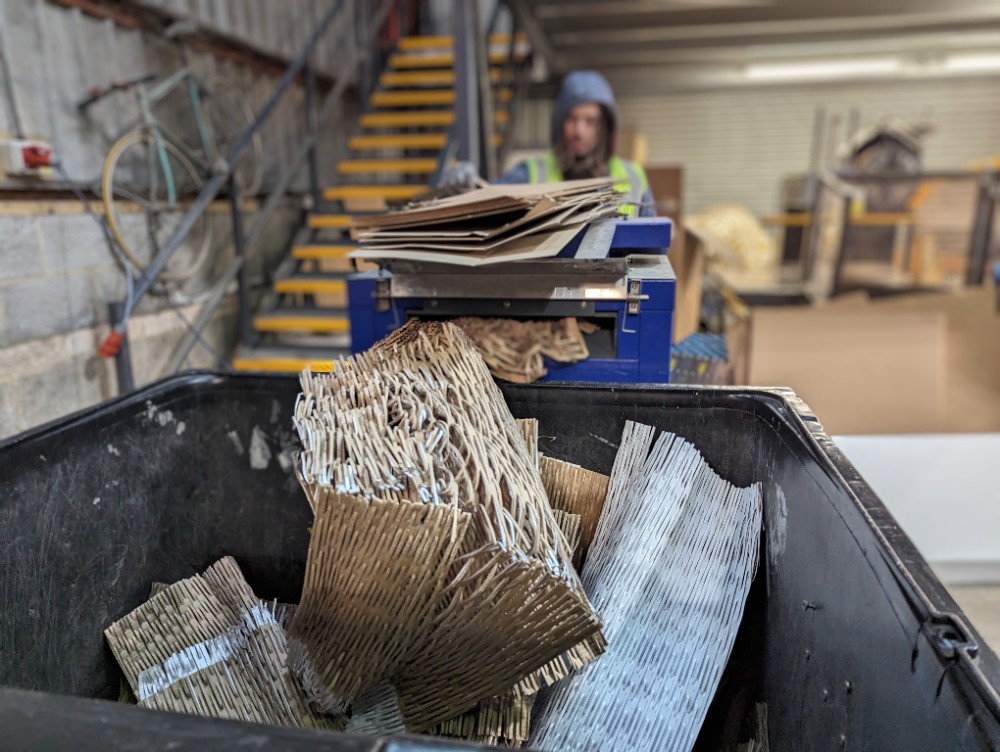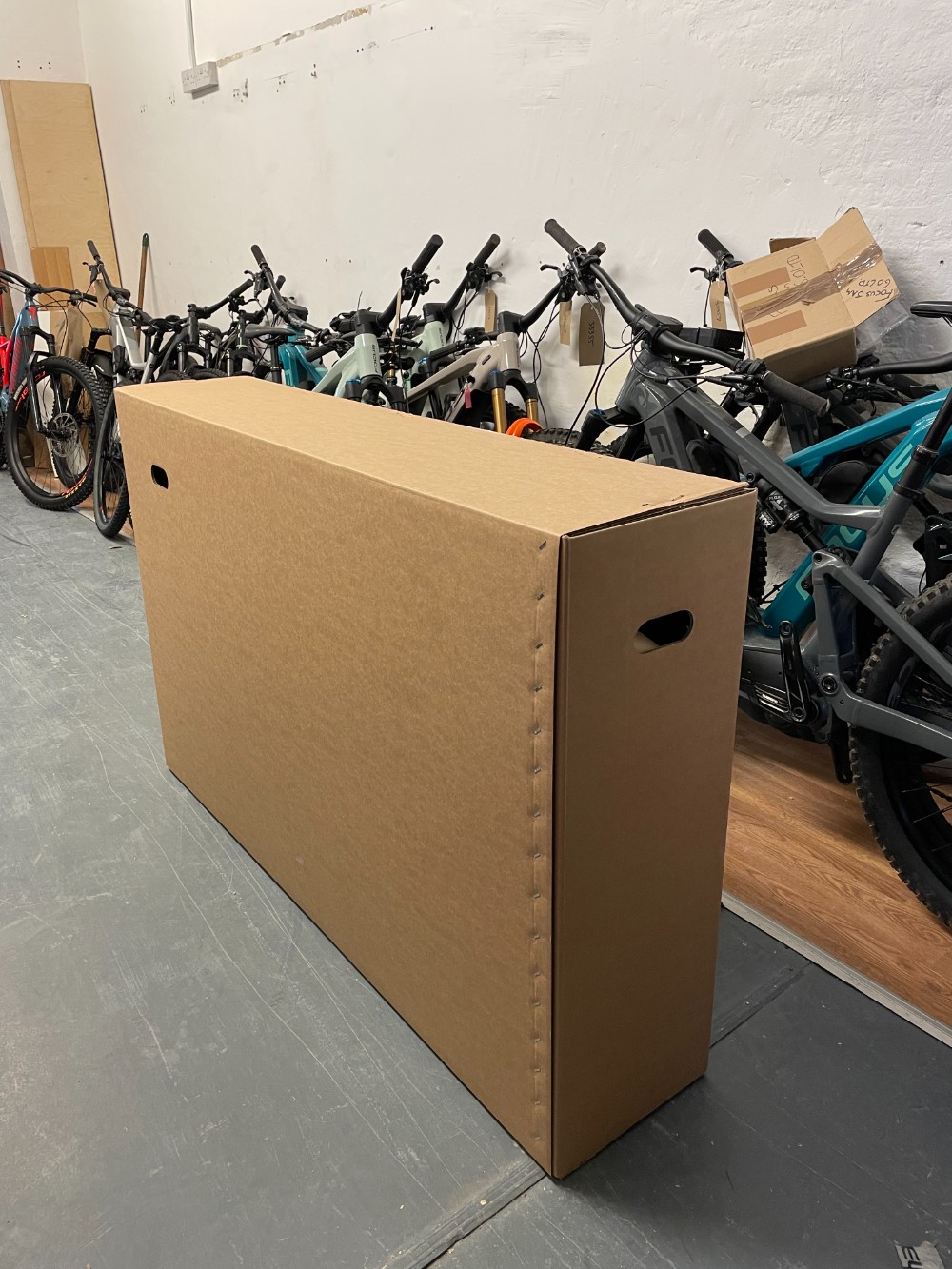Blog - How to Package a Bike for Safe and Secure Shipping - An Expert Guide

For high-value items like bikes, the right packaging is key to safe and secure shipping. Not to mention, it's often the difference between a satisfied and an unhappy customer.
The best packaging will ensure that your bike withstands the journey to your customer without sustaining any damage, while also balancing cost-effectiveness and efficiency. Our experts weigh in on how to package a bike for shipping, combining innovation and expertise to keep your products in excellent condition during delivery.
Heavy Duty Cardboard
A strong and durable cardboard is the primary material used for bicycle packaging, able to withstand handling and shipping stresses.
Protective Packaging
As a bike manufacturer or retailer, your number one priority is no doubt the safety and protection of the product inside your packaging:
“Many bike manufacturers and retailers need to secure their bikes within the box to ensure there is no damage in transit, as even a small scuff or scratch to a frame will not be tolerated by the customer.” Scott Newman, Sales Director at Tidmas Townsend
To this end, some of the key protective packaging for bikes includes:
- Bubble wrap
- Foam tubing or wrap
- Corrugated or kraft paper
- Recycled shredded cardboard (an eco friendly alternative to foams and plastics)
- Zip ties

Custom Corrugated Inserts
Strong Parcel Tape
A strong parcel tape will add another layer of protection to your bike packaging, sealing and securing the box once your bike has been packaged inside.
- Inspect and Prep: Inspect the bicycle for any manufacturing debris or fingerprints, and remove detachable accessories to avoid damage during transit.
- Pedal Removal: Remove the bike’s pedals, which will allow the bicycle to fit into the box. You can do this using a wrench to turn the pedal bolts counter-clockwise.
- Shift the Chain: The chain should be placed on the small chain ring and largest rear cog.
- Front Wheel Removal: Detach and remove the front wheel to reduce the bike's overall size, making it easier to package securely. This is a simple job if the bike has quick-release bolts. If you are packing your bike to ship by air, the wheels should be deflated.
- Handlebars Adjustment: Lower or remove the handlebars to minimise the package's width and align them with the bike's frame.
- Install Fork Spacers: Place fork spacers where the front wheel was removed to protect the forks from pressure and prevent damage.
- Protect the Frame: Wrap the frame thoroughly with bubble wrap or foam padding, particularly around delicate areas like the top tube to guard against impacts.
- Secure Components: Place the front wheel alongside the frame within the box, ensuring it is padded separately to avoid contact. Attach smaller parts like pedals or seats securely to the frame.
- Fill Empty Spaces: Use materials such as foam blocks, corrugated inserts or kraft paper to fill any voids and prevent the bicycle from shifting during shipping.
- Seal the Box: Close and firmly seal the box with heavy-duty packing tape, covering all openings and seams.
- Labelling: Clearly label the package with handling instructions, destination details and any other necessary shipping labels.
0203 Style Boxes
Our current recommendation for many cycling brands is to use 0203 style packaging boxes, as shown below. These boxes are designed with fully folding top flaps which provide enhanced protection and stability for the entire bicycle.

Ergonomic Hand Holes
Cutting ergonomic hand holes into bike packaging allows for easier handling by couriers. These hand holes in the sides of the box help prevent mishandling, such as dragging it on the ground, which can damage the packaging and the bike inside.
Proper handling enabled by these hand holes maintains the integrity of the box and its contents.

Stitched Finishes

Heavy-Duty Board Grades
- High Value and Fragility: Bikes are often high in value and mechanical complexity. The fragility of components like gears and breaks means that even minor impacts during transit can cause considerable issues.
- Cost of Damage: As a retailer, the cost of bicycles damaged in transit extends beyond expensive repairs and replacements. Unsuitable packaging can also lead to increased returns, driving costs and wasting valuable resources and time in logistics.
- Customer Satisfaction: The unboxing experience is crucial in retaining customer loyalty. A bike arriving in perfect condition establishes customer trust and satisfaction, and this is essential for securing repeat business and positive reviews.
- Brand Reputation: Effective packaging is a sign of your brand’s commitment to quality and reliability, showing that you value your customers, their happiness, and their investment.
For businesses who would like to refine their packaging strategy further, our team is available to provide expert advice, custom packaging solutions and demonstrations of how to package a bike effectively. Contact us to streamline your shipping processes and ensure your bicycles reach customers in perfect condition.













